
Saxony-Anhalt is a state of Germany, bordering the states of Brandenburg, Saxony, Thuringia and Lower Saxony. It covers an area of 20,451.7 square kilometres (7,896.4 sq mi) and has a population of 2.17 million inhabitants, making it the 8th-largest state in Germany by area and the 11th-largest by population. Its capital is Magdeburg and its largest city is Halle (Saale).
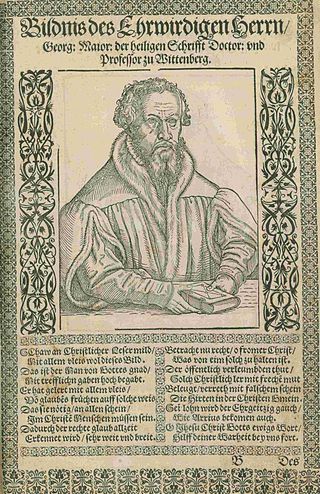
Georg Major was a Lutheran theologian of the Protestant Reformation.

Wittenberg, is the fourth-largest town in Saxony-Anhalt, Germany. Wittenberg is situated on the River Elbe, 60 kilometers (37 mi) north of Leipzig and 90 kilometers (56 mi) south-west of Berlin, and has a population of 46,008 (2018).
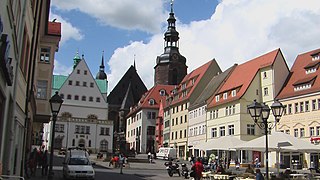
Eisleben is a town in Saxony-Anhalt, Germany. It is famous as both the hometown of the influential theologian Martin Luther and the place where he died; hence, its official name is Lutherstadt Eisleben.
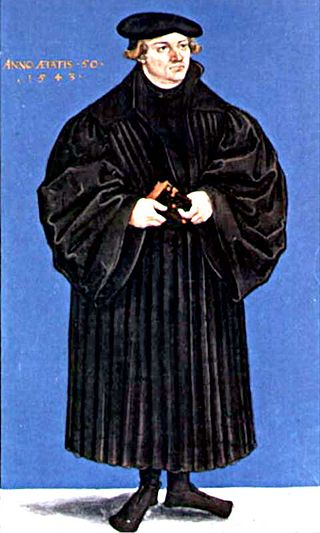
Justus Jonas, the Elder, or simply Justus Jonas, was a German Lutheran theologian and reformer. He was a Jurist, Professor and Hymn writer. He is best known for his translations of the writings of Martin Luther and Philipp Melanchthon. He accompanied Martin Luther in his final moments.

Mansfeld, sometimes also unofficially Mansfeld-Lutherstadt, is a town in the district of Mansfeld-Südharz, in Saxony-Anhalt, Germany.

Martin Luther was a German priest, theologian, author, hymnwriter, professor, and Augustinian friar. He was the seminal figure of the Protestant Reformation, and his theological beliefs form the basis of Lutheranism.

Cyriacus Spangenberg was a German theologian, Protestant reformer and historian, son of the reformer Johannes Spangenberg (1484–1550).
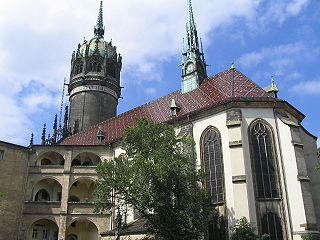
All Saints' Church, commonly referred to as Schlosskirche to distinguish it from the Stadtkirche of St. Mary's, sometimes known as the Reformation Memorial Church, is a Lutheran church in Wittenberg, Saxony-Anhalt, Germany. It is the site where, according to Philip Melanchthon, the Ninety-five Theses were posted by Martin Luther in 1517, launching the beginning of the Protestant Reformation.
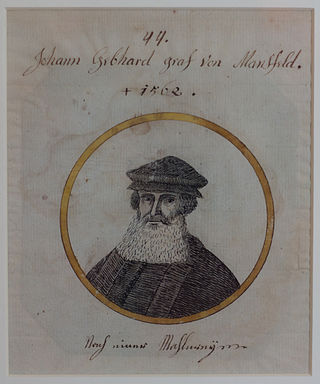
Johann Gebhard von Mansfeld-Vorderort, born circa 1525–30, was Archbishop-Elector of Cologne. He died in Frankfurt on 2 November 1562.
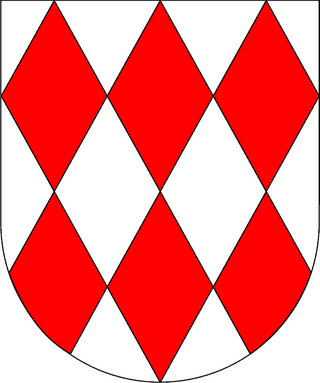
The House of Mansfeld was a princely German house, which took its name from the town of Mansfeld in the present-day state of Saxony-Anhalt. Mansfelds were archbishops, generals, supporters as well as opponents of Martin Luther, and Habsburg administrators.

The Lutherhaus is a writer's house museum in Lutherstadt Wittenberg, Germany. Originally built in 1504 as part of the University of Wittenberg, the building was the home of Martin Luther for most of his adult life and a significant location in the history of the Protestant Reformation. Luther was living here when he wrote his 95 Theses.
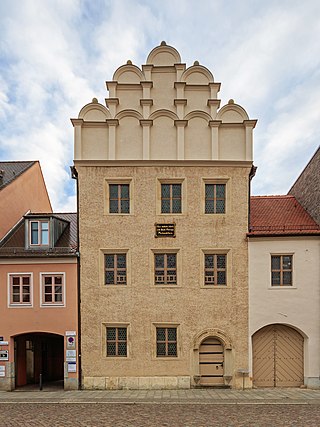
The Melanchthonhaus is a writer's house museum in the German town of Lutherstadt Wittenberg. It is a Renaissance building with late Gothic arched windows and the broad-tiered gables. It includes the study of the influential Protestant Reformer Philipp Melanchthon, who lived there with his family. In 1954 the house became a museum on Melanchthon's life and work displaying paintings, prints and manuscripts by him and his contemporaries. In 1996, the building became a UNESCO World Heritage Site along with sites associated with Melanchthon's contemporary Martin Luther in Witternberg and Eisleben because of their religious significance and the lasting, global influence of Protestantism.

Johann Wigand was a German Lutheran cleric, Protestant reformer and theologian. He served as Bishop of Pomesania.
Mansfeld Land is a region in the southwestern corner of the German state of Saxony-Anhalt. The region derives its name from the counts of Mansfeld, who ruled this region for about 1,000 years.
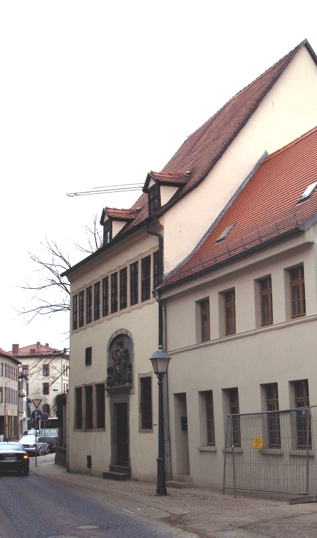
Martin Luther's Birth House is a building and museum in Eisleben, Germany. The German religious reformer Martin Luther was born there in 1483. However, the actual house in which Luther was born no longer exists, it having been burnt completely to the ground in 1689. A new building was built on the original site and was opened to the public in 1693, although it did not adhere to the original floor plan and size of the former house. An excavation was carried out in 2006, revealing pottery shards and a clay floor from the original house.

Lukas Furtenagel (1505–1546) was a German painter.

Lutherhaus Eisenach is one of the oldest surviving half-timbered houses in Thuringia. Tradition holds that Martin Luther lived there with the Cotta family during his schooldays in Eisenach from 1498 to 1501. The Lutherhaus has been one of the most important historic Reformation sites since the 19th century and, as such, was designated a "European cultural heritage site" in 2011. The Lutherhaus has been run as a cultural history museum since 1956.

St. Augustine's Monastery in Erfurt, central Germany, is a former church and monastery complex dating from the 13th century. The site is almost one hectare in size. It was built by Augustinian friars, an order of the Catholic Church. It is most well known as the former home of Martin Luther (1483–1546), the father of the Reformation, who lived there as a friar from 1505 until 1511.

A Lutherstadt is a city German protestant reformer Martin Luther visited or played an important role in. Two cities, Lutherstadt Eisleben and Lutherstadt Wittenberg, have "Lutherstadt" in their official names, while Mansfeld-Lutherstadt is the unofficial name of a district in Mansfeld. These three places which were important in Luther's life were awarded the "European Heritage Label".




















